Rebecca Lerner's Blog, page 3
October 29, 2014
Medicine for the Autumn Chaos
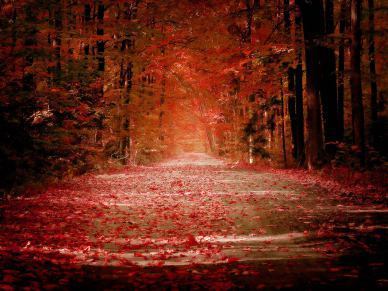
photographer unknown
In Indian herbalism (Ayurveda), the autumn is considered a time of increased “vata,” which is dynamic air energy that can feel very destabilizing. As a result, a lot of people are feeling ungrounded, off, confused and overwhelmed right now, so if you’re one of them, consider yourself a sensitive person who is experiencing something very normal right now! This season is all about transition, change, decay, and sometimes chaotic energies.
If you’re very sensitive, you’ll be affected not only by the atmosphere but also by other people’s reactions to this. That can look like a mess, because vata times are when addictions and compulsions and other imbalanced coping mechanisms tend to flare up. People can be unreasonable too because of the natural human tendency in these circumstances to cling to intense emotions, strong beliefs and judgements because they may feel more stable.
You can stabilize yourself by grounding in your body and practicing healthy self-care to soothe: take baths, keep to routines of bedtimes and wake up times, keep your blood sugar stable by eating frequently (and not sugary if possible), exercise, and be outdoors. Stay centered in your heart and do whatever you can to have fun and relax. The upside of these energies is that they are great for creativity! This is a perfect time to write, paint, dream or make! And it is very conducive to meditation, too.
If you are a yang energy sort of person who is used to “taking the bull by the horns” and powering through challenges, this time can be especially difficult, because due to the intense energetic atmosphere, often the best thing to do is the exact opposite: Nothing! But doing nothing is not actually doing nothing — it’s being in stillness, allowing the flow of life and spirit the space to work miracles for you. The plant spirit passionflower would be a great ally for you if you need help relaxing and being still. Just take a couple drops of the tincture to connect with the plant and open yourself to merging with it; you’ll feel yourself centering and grounding.
In the body, increased vata energy causes feelings of anxiety and ungroundedness. Some foods that are used in Ayurveda to help balance the vata energy in the body are hot beverages like tea, fatty foods, dairy, heavier sweet foods such as mangoes and avocados, ginger root, cardamom, cinnamon, and other warming chai type spices. Dry or excessively cold foods such as smoothies and popcorn will aggravate vata.
Sweet Root, aka Sweet Cicely, Osmorhiza spp., is an excellent plant spirit remedy for those who need extra help feeling safe, secure, and connected to the Earth during this intense time.
The time of change can also bring many challenges that require extra support to get through. If you’re having a hard time right now, shamanic Reiki energy work is an amazing option. I’m here for you. I do distance sessions over the phone that are very powerful and if you’re local, you can come see me in person in Portland on NW 23rd Ave & Johnson St. by appointment. I’ve got testimonials on my Plant Spirit Reiki website and on Yelp that you can check out, too. Reach out to me by email at RebeccaELerner(at)gmail.com when you’re ready to book.
I’m wishing you all the very best. Be gentle with yourself.
**
To view my upcoming metaphysical classes in Portland, Oregon, at Healing Waters & Sacred Spaces and New Renaissance Bookshop, please click here.
August 1, 2014
This is not a strawberry
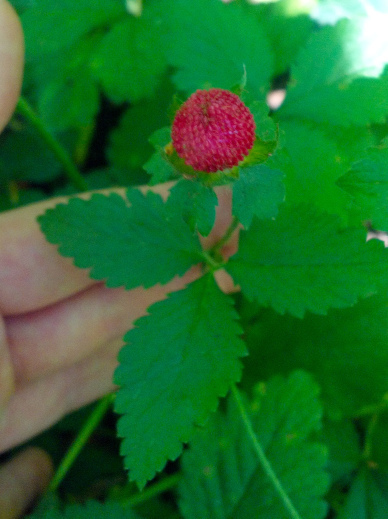
Potentilla indica, also known as “Indian strawberry” or “mock strawberry”
Potentilla indica, also known as Duchesnea indica, and “mock strawberry,” or “Indian strawberry,” is an edible plant found on woodland floors across the United States. Originally it is native to Asia but was brought over as an ornamental. Many people who see it and don’t know this assume it is a true wild strawberry — and at least one survival guide I’ve heard of mistakenly lists it as poisonous, which it is also not.
Like Fragaria virginiana, the true wild strawberry native to North America, P. indica has three-part leaves and red berries. However, with the P. indica, the flower is yellow with five petals instead of white. And though it is subtle, when you compare the two photos here you can see also that the leaves are different; the true wild strawberry leaves have straighter veins and more sharply serrated edges when compared to the mock strawberry leaves above. Here is the true wild strawberry below:
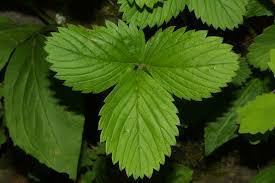
F. virginiana, wild strawberry / image by Vanderbilt.edu
The flavor of mock strawberry is very bland, tasteless even, which seems surprising given its bright color and resemblance to the popular fruit. Interestingly, the herb is used in Chinese medicine as an anticoagulant, detoxifier, and antiseptic, as well as a febrifuge (herb taken to reduce fever), and studies published in the west have looked at its medicinal properties as an effective anti-inflammatory and as an immuno-stimulantuseful against cancer. The latter study:
“A promising and recently identified alternative to classical antibiotic treatment is the use of immunomodulators, which enhance immune reactions via the stimulation of non-specific systems, such as granulocytes, macrophages, complement, certain T-lymphocytes and various effector substances (1,2). Several studies have focused on identifying compounds that are able to modulate the biological response of immune cells thereby enhancing the immunity of the host against various diseases (3,4). The increasing interest in folk medicine is due numerous well known plant remedies that are able to exert their anti-infective influence by directly affecting the pathogen, in addition to affecting immune cells by improving their activity. These effects were partially contributed to by the stimulation of the natural and adaptive defense mechanisms of the host organism…
Potentilla indica (formally known as Duchesnea indica) is a member of the Rosaceae family, which is native to eastern and southern Asia and is commonly termed a mock strawberry. It exhibits a moderate cytotoxic effect against various cancerous cell lines… The ability of these plant extracts to modulate innate immune functions suggests promising further therapeutic development on wound healing and inhibition of tumor growth through modulation of lymphocytes.”
If you’d like to come taste some of these pretend strawberries, as well as the many other tasty edible berries now populating the wilderness (and urban wilderness) of the Portland, Oregon, area, consider joining me for a private hike! These are fun for kids and grownups; I’ve recently had the pleasure of taking some really nice homeschool kids out urban foraging and we had a blast! Their mom wrote me after saying the experience had been greatly inspiring to them and ignited a real love of plants and herbs!
Also, as always, keep me in mind if you’re drawn to exploring the emotional and metaphysical healing properties of plants with Plant Spirit Reiki.
#KeepItWIld!
July 15, 2014
Meet the Ethereal Mimosa Tree
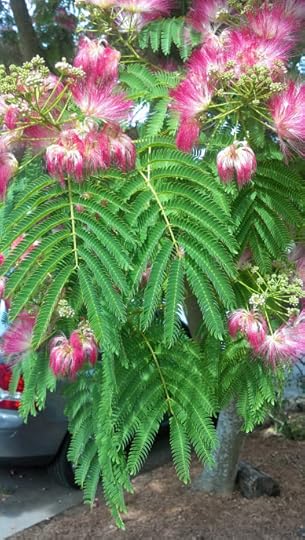
Mimosa tree
Mimosa tree, Albizia julibrissin, is in bloom with its stunning flowers right now, which are very delicate, with fan-like clusters of stamens that look like feathery magenta hairs. They are intoxicatingly fragrant, but not psychoactive, unlike its relative by a similar name, the tropical Mimosa tenuiflora, which is used in powerfully entheogenic ayahuasca brews.
Albizia and Mimosa are considered to be different genuses, even though they do have some resemblances, particularly in the appearance of the leaves, which are pinnately twice-compound, and they are both in the legume family and the Mimosoideae subfamily.
Though the seed pods look like pea pods a bit, they’re not regarded as edible in any plant guides I’ve seen, though the flowers and leaves are considered to be. I tested it tonight while walking the dog. I tried to eat both the wispy flowers and the leaves, and I will tell you that if I wrote a field guide, I would classify them under “starvation food only.” Given how fine the flowers are and how they seem to collapse and shrivel instantly when picked, it’s like eating a feather. The leaves are very dry and a little bit astringent and a little bit sour/tart, and otherwise taste like grass. Not food in my book!
Chinese herbalists tincture Albizia flowers and bark as a remedy for mild depression and anxiety, as well as for insomnia, poor memory, irritability, and “angry feelings due to constrained emotions,” all of which are considered to be caused by imbalances in the heart and liver meridians. You can read more about the traditional Chinese use of this plant in my teacher Michael Tierra’s article here. I have also heard Ayurvedic herbalist Candis Cantin talk about using a tincture of Albizia as a stress-relief medicine.
On Saturday night, the full moon, I decided to meditate on this plant with some friends to get to know it a bit better. We all found it to be a challenging plant to tap into, unlike most that we have sat with. I felt its essence had a quality of being graceful, ethereal and ephemeral, mirroring its wispy flowers and its leaves, which had closed tightly at nightfall and would not let us open them no matter how we tried to pry them apart. At first we sat indoors holding the leaves and flowers in our hands as we meditated, but later we decided to go outside and touch the bark and experience it in person to see if we could perceive a little more. Even then we found its energy fairly subtle and even a bit reticent – but we got a stronger sense of it when one person in the group reminded us to put all of our awareness into the heart space and quiet the mind, which turned up the volume, as it always does. This woman, who had never heard about this plant before that evening and only happened to join us because she is interested in meditation, reported that she kept getting images of bees and hummingbirds. I didn’t think a plant with a flower like that would have much nectar, so I doubted her impression, but was surprised to learn later in some web research that it does in fact attract both! Other people present mentioned they experienced a physical sensation of blood flowing in their bodies. I hadn’t experienced myself and didn’t recall that it was a circulation medicine, but I discovered later that they were right on that count, too!
When I revisited Michael Tierra’s article this evening, I saw that he had written: “…The bark is regarded as one of the most important herbs for the treatment of external trauma and injuries. It promotes blood circulation, reduces pain and swelling, promotes the regeneration of flesh and facilitates the healing of bone fractures.”
It’s amazing how much information the plants will reveal to us when we make it a point to listen with open minds and hearts! If you would like to learn more about plants as beings, and experience a guided meditation, then you’d enjoy my powerful MP3 class, “Connecting with Plant Spirits,” an extension of my work doing Reiki energy healing with plant spirits in person and via distance. For more about that, click here.
Private Urban & Wilderness Hikes: Right now is an ideal time to learn how to identify wild plants on a private wild plant hike because the forests and urban neighborhoods are bursting with fruit and flowers, making for a tasty and visually pleasing excursion. When you join me for a jaunt in my northeast Portland ‘hood within the next few weeks, you’ll get to sample figs, apples, pears, currants, blackberries, raspberries and hazelnuts — in addition to the medicinal herbs that live here — and in the wilderness areas you could taste huckleberries, Oregon grape, salmon berry, thimbleberry, elder, and more! For more info and to book an adventure with me, click here.
Happy foraging!
June 22, 2014
Review: “Foraging with Kids” by Wildman Steve Brill
 Wildman Steve Brill’s new book, “Foraging with Kids: For Teachers, Parents & Grandparents,” is vying for a top spot on my list of favorite foraging guides because it’s jam-packed with wonderful botanical illustrations, full-color photos diagrammed with helpful terminology, folklore, and especially, inspiring and creative ideas for wild edibles that just about anybody would enjoy, including:
Wildman Steve Brill’s new book, “Foraging with Kids: For Teachers, Parents & Grandparents,” is vying for a top spot on my list of favorite foraging guides because it’s jam-packed with wonderful botanical illustrations, full-color photos diagrammed with helpful terminology, folklore, and especially, inspiring and creative ideas for wild edibles that just about anybody would enjoy, including:
* making dandelion petals a pizza topping
* freezing violet flowers in ice cube trays to decorate drinks
* wood sorrel-miso soup
* cattail pudding
and much more.
The cover features Steve and his expert forager daughter, Violet, on the cover. The concept is that this is a book for educators who will work with kids, and science teachers and homeschool parents will appreciate Steve’s thoughtful suggestions of tie-ins between the world of edible wild plants and scientific concepts such as natural selection, the dangers of herbicides in ecosystems, the nitrogen cycle, and parasitism. But I think it’s great for anyone who is serious about learning to identify wild plants. Just check out these wonderful images:
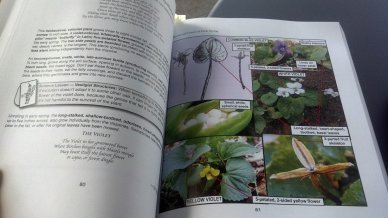 You may already be familiar with Steve as New York City’s premier foraging educator for more than thirty years, or as the published author of the excellent foraging resources “Wild Vegan Cookbook” and “Identifying & Harvesting Edible and Medicinal Plants in Wild (and Not So Wild) Places,” and if so, then you know what a valuable resource he is. This newest effort is a worthy addition to the collection: At nearly 400 pages, it is quite the comprehensive endeavor, covering fruits, nuts, flowers, seaweed, and a selection of mushrooms, too.
You may already be familiar with Steve as New York City’s premier foraging educator for more than thirty years, or as the published author of the excellent foraging resources “Wild Vegan Cookbook” and “Identifying & Harvesting Edible and Medicinal Plants in Wild (and Not So Wild) Places,” and if so, then you know what a valuable resource he is. This newest effort is a worthy addition to the collection: At nearly 400 pages, it is quite the comprehensive endeavor, covering fruits, nuts, flowers, seaweed, and a selection of mushrooms, too.
Bottom line? Highly recommended. Whether as a gift for yourself, an educator, a parent, or even a foraging enthusiast who doesn’t fit those categories and may not work with kids, this book is a great investment. As it is self-published and not available on Amazon, get your copy signed and directly from Steve right here.
June 11, 2014
Poison Plant: The Bane(berry) of Your Existence
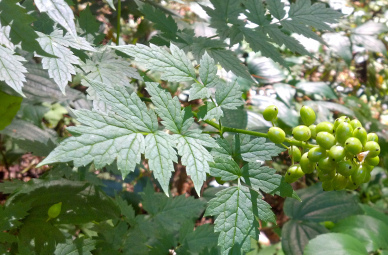 We were in the forest one recent afternoon, myself and the lovely ginger-haired Jess Wright, a holistically minded nurse from southern California who had hired me for a private hike.
We were in the forest one recent afternoon, myself and the lovely ginger-haired Jess Wright, a holistically minded nurse from southern California who had hired me for a private hike.
We walk for two hours and cover dozens of plants, happily, and then we unexpectedly come across this mystery specimen I had never before encountered.
“Look at those berries,” Jess said, leaning in close to this meter-tall bush. “What are they called?”
“I have no idea,” I said, “but I get a strong poison vibe. The sharply toothed leaves and those shiny berries feel menacing to me, as if they are saying, ‘I will kill you.” Jess concurred.
I reached in my bag and pulled out my favorite field guide, Plants of the Pacific Northwest Coast. I flipped through the pages until I found a plant that looked just like the one we were looking at and matched its characteristics of coarsely toothed and lobed leaves 2 to 3 times divided in 3s, growing about 1 meter tall, and living in moist, shady forests at low to mid elevation in this region.
“Ah, the book says it’s Actea rubra,” I said. “It says ‘the common name Baneberry refers to the plant’s severely poisonous nature and comes from the Anglo-Saxon word bana, meaning murderous.” Ingesting just six berries can cause respiratory paralysis. Poison indeed! Score one for the intuition.
As we walked on, Jess playfully re-named the plant “Don’t Eat Me,” an accurate suggestion!
Yet, despite its lethal potential, baneberry, like almost all plants, is useful medicinally. I later dove into the ethnobotanical literature and learned that while the berries themselves are avoided as poisonous, the Cheyenne, Chippewa, Cree, Blackfoot, and Quinault people use a decoction of the plant’s roots as a cold and cough remedy, for staunching excessive menstrual bleeding, to promote milk flow after childbirth, and for rheumatism. The leaves have also been applied topically to heal boils.
By the way, pictured above are the unripe berries. When ripe, they turn red in color. Less commonly, they may be white, or confused with the other lethal Bane, the villain seen in the latest Batman movie. Both can kill, but the difference is that the Hollywood version is played by Tom Hardy.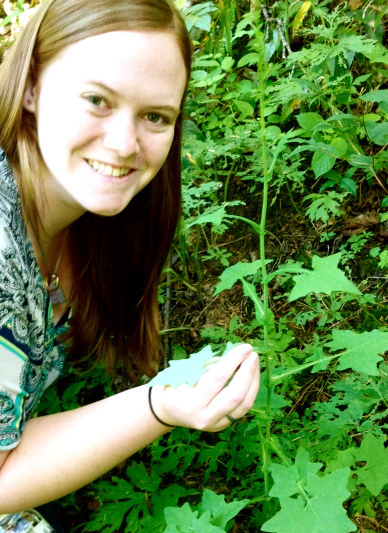
Here Jess poses with Pathfinder, aka Trail Plant, Adenocaulon bicolor, a plant I’ll be covering on this blog very soon!
To learn more plants, visits the Plant Gallery page, order a plant walk DVD, or go on a private hike with me!
Upcoming Classes:
Igniting Your Psychic Connection with Elderberry & Passionflower
A plant spirit voyage of discovery through guided meditation and experimentation this Thursday, June 12, 6:30 to 8:30 pm at New Renaissance Bookshop, NW 23rd Ave & Pettygrove, Portland, OR $20 at the door
Share this post!
May 28, 2014
Have you seen these photos?

When you look at that photo above, can’t you just feel the beautiful, tranquil energy of the rolling pastures, streams, and woods at Still Meadow retreat center radiating off the page? It’s truly lovely: gentle, supportive, and relaxing, like saying, “Ahhh….” And it’s imbued with sacred geometry to create a special container for powerful, life-changing experiences!
That’s why I picked it for my upcoming Plant Spirit Retreat on the summer solstice, June 20-22, a magical weekend of meditations, guided plant walks, past-life regression – and much more – designed to help you deepen your spiritual connection with Earth and activate your ability to work with plant spirits in a fun, relaxing, supportive environment.
Here’s the indoor space where we’ll have classes, called the Gaia House, below:
Whether you decide to stay in Portland and do the 30 minute commute or stay on site to really soak it in, I know you’re going to have an incredible experience if you come. Wouldn’t you like to join me?
And, I’ve got a new special: when you sign up with a friend, you both save $27! Sign up by June 10 and tuition is $277; after that, it’s $297.
If you want a private room, hurry, because there are only two left! And if you want to camp, we have four tent spots.

This is a lovely private room
***
Lodging
You’ll love the amazing energy of the Gaia House space at Still Meadow where we’ll be staying, and the healing, activating and expansion that comes with being fully connected to the community and immersed in the experience.

This is a shared/dorm room. Very comfortable and relaxing!
Private Room – $86/night (only 2 left!)
Shared Room (per bed) – $58/night
Dorm Room (per bed) – $33/night
Camping – $20/night (4 spots left!)
Commuting – $10/day
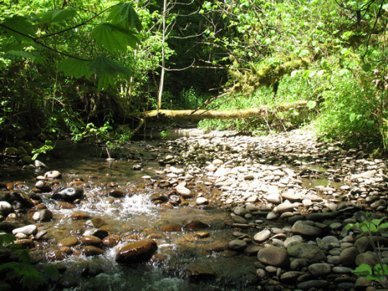
Meal Options
The food at Still Meadow is very healthy and delicious. Their skillful culinary staff is happy to accommodate dietary restrictions with advance notice. Their official policy does not allow guests to bring their own food, but they do allow people to eat off premises.
All Inclusive: $80 (Fri: Dinner, Sat: Breakfast + Lunch + Dinner & Sun: Breakfast + Lunch)
Late Riser: $60 (Fri: Dinner, Sat: Lunch + Dinner & Sun Lunch)
Note: Gluten-free meals are $1.25 extra per meal
**
REGISTRATION
Book your spot with your $277 tuition deposit via PayPal using the button below!
To arrange your room & board preferences, e-mail my co-teacher, Brandon Kaye, at BFKaye@gmail.com. Also let Brandon know if you are signing up with a friend or have any questions.
Transportation
The event wall on Facebook is a great place to coordinate ride shares.
Questions? As always, I would love to hear from you. Leave a comment to reach me or email BFkaye@gmail.com for info on fees or logistics.
May 21, 2014
Osha: A Smokeable Spirit Medicine
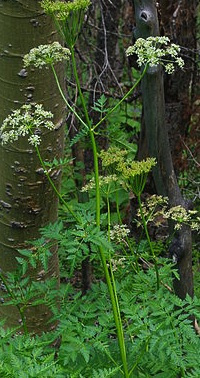 Although Osha, Ligusticum porteri, is native to the Rocky Mountains and the American Southwest, and doesn’t grow wild here in the Portland, Oregon, area, where I live, I’ve long felt drawn to work with it. I had heard that Osha was a powerful antiviral and lung medicine in the parsley family*, used as a diaphoretic, anesthetic, bitter, and expectorant, as well as for headaches, and that it can be smoked.
Although Osha, Ligusticum porteri, is native to the Rocky Mountains and the American Southwest, and doesn’t grow wild here in the Portland, Oregon, area, where I live, I’ve long felt drawn to work with it. I had heard that Osha was a powerful antiviral and lung medicine in the parsley family*, used as a diaphoretic, anesthetic, bitter, and expectorant, as well as for headaches, and that it can be smoked.
I think I first smelled its sweet odor burned as incense three years ago, but it really popped on my radar earlier this spring when I heard shamanic herbalist and author Matthew Wood talk about Osha in a lecture on “Bear Medicines,” herbs that have been associated with use by bears in North America by indigenous people — which therefore tend to be roots and berries. Matthew mentioned that Osha can be worn as a protective charm against contagion. As he spoke, I remembered that I had read a passage about Osha root in Eliot Cowan’s excellent book “Plant Spirit Medicine,” specifically its use by a medicine man named Don Enrique Salmon whose family came from the Raramuri tribe in Mexico:
“My plant spirit helper is what we call chuchupate or the Mexicans call it osha. It is a very powerful plant…I use it for infections, cuts, arthritis, headaches, sore throats, colds, stomach aches. It cures almost anything. You make a strong tea or just take the root and chew it.” It repels rattlesnakes and witches…Osha talks to me sometimes.”
Then, just about a month ago, while I was in Santa Cruz, California, attending an herbal seminar at Michael Tierra’s East West School of Planetary Herbology, where I am a student, Ayurveda teacher Candis Cantin was passing around samples of different plants she works with for us to smell and taste, and it just so happened that one of them was Osha root. I took a thick piece of the root and smelled its sweetness and put it in my medicine bag to get to know later. At night I meditated with the intention of getting to know the plant. I sent it my respect and gratitude, and settled into my heart space, inviting the plant sit with me and share its presence with mine. To my surprise, I had a vivid sensation of a strong, tall person standing behind me doing energy work on my body. As a Reiki master and frequent meditator, I am used to feeling the presence of plant spirits, but rarely so intensely as this! Often I can feel energy shifting but rarely does it feel like a human being standing in the room next to me.
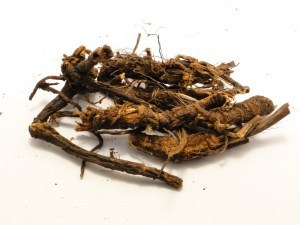
Osha roots; photographer unknown
When I got back to Portland, I invited some close friends over to meditate with Osha root with me on the full moon. We smoked it in a pipe that we passed around the circle and then we all sat with this shared intention, once again sending the plant our respect and gratitude for its medicine, and our receptivity to receiving its wisdom. This time, we all had a potent experience. We all experienced the spirit as masculine, more serious than playful, but warm and kind. It gave us a strong feeling of rootedness into the Earth, and we felt relaxed, reassured, and safe. A couple people there, who had mild social anxiety, reported that they had the strong sensation of self-acceptance, feeling very secure in their worth and comfortable with their uniqueness. Two others received profound, life-changing realizations of a personal nature.
For me, I felt as if the energy of the plant took me underground to a deep, special, magical place I have experienced before only with ayahuasca. As I began to think during this experience, naming with my mind the place I was in as “underground,” my journey halted and seemed to shift me out of where I was and bring me back to the normal everyday place where I live, interacting with the world through my mind. By contrast, the place beneath words, the place we enter through meditation and journeying, the spirit world, is a much richer, more expansive, more magical, more sensual place where things are not predictable, but much more exciting. I saw then that relying too much on the mind and rushing to define my experiences in order to grasp them has the effect of limiting the flow of the magic, because attaching limited understandings (ie. words) onto experiences takes us out of the moment, instead of allowing it to unfold in its uniqueness.
Though I have been working with plant spirits in this way for years now and have taught many plant spirit classes, long-time readers of this blog will find this sort of blog post to seem quite new. I initially started this as a wildcrafting blog, at first talking about edibles and then getting into the physical medicines, and then later the metaphysical properties of the plants. Now I experience plants in this full spectrum way, and I am excited to share it with you.
If this approach speaks to you, too, then you would love my upcoming Plant Spirit Retreat on the summer solstice, June 20-22, at a wonderful retreat center 30 minutes south of Portland, Oregon at the Still Meadow Retreat Center. This is going to be a very special and magical experience, designed for people at all levels of plant spirit work and intuitive development, especially beginners, and will be packed full of plant spirit meditations, plant identification walks, smoking ceremonies, past-life regression, and a solstice celebration fire ceremony! The tuition is only $277 as long as you sign up before June 10, and you can pick from an array of options for room and board on the relaxing premises. Space is limited: Secure your spot right now here. (If you have any questions about the retreat, contact me or my co-teacher, Brandon Kaye, at BFKaye@gmail.com)
Upcoming Classes:
Elder & Passionflower Plant Spirit Meditation – Thursday, June 12, 6:30 to 8:30 pm, at New Renaissance Bookshop, $20
Elder and Passionflower are two powerful plant spirit allies who love to deepen and ignite your psychic abilities. Together, they center us in the heart space, heighten our receptivity to spirit, and activate the pineal gland and third eye to help us move between worlds. Come learn about these two plants and get to know these two plants intimately with a powerful guided meditation experience.
Plant Spirit Retreat on the Summer Solstice – Friday June 20 to Sunday June 22, at Still Meadow Retreat Center in Damascus, Oregon, $277 + room & board
An incredible experience of communing with nature in community, while igniting and developing your intuitive skills!
Room Options
Private Room* – $86/night
Shared Room – $58/night
Dorm Room – $30/night
Camping – $20/night
Commuting – $10/day
*There are a limited number of private rooms, first come first serve.
(These prices include taxes)
Food Options
A) All Inclusive: $80 (Fri: Dinner, Sat: Breakfast + Lunch + Dinner & Sun: Breakfast + Lunch)
B) Late Riser: $60 (Fri: Dinner, Sat: Lunch + Dinner & Sun Lunch)
Note: Gluten-free meals are $1.25 extra per meal
Sign up with your tuition payment here and then email BFKaye@gmail.com your room/board choice to join us!
~~
*Thanks for reading! Please share this post.*
* Safety warning: Osha looks a lot like poison hemlock, which is also in the parsley family. Be careful not to confuse the two if you are harvesting this herb.
April 21, 2014
Announcing the 2014 Plant Spirit Retreat!
 Join me for an unforgettable Plant Spirit Retreat at Still Meadow Retreat Center in Damascus, Oregon, June 20-22 over the Summer Solstice!
Join me for an unforgettable Plant Spirit Retreat at Still Meadow Retreat Center in Damascus, Oregon, June 20-22 over the Summer Solstice!
Imagine: An amazing weekend filled with fire ceremonies, guided meditations, edible & medicinal plant identification walks, herbal smoking blends, medicine bag making, plus intuitive training and third eye activations with my co-teacher, professional psychic medium Brandon Kaye!
This retreat is for you if:
* You love nature, and plants especially
* You want to discover and develop your intuitive abilities
* You’re curious about connecting more deeply with plant spirits
* You want to do something unique, memorable, and special on the Summer Solstice!
Schedule:
Friday June 20
3 pm to 5 pm Welcome & Check In:
Arrive any time in this window at your leisure, relax, get settled, explore the trails and farm at Still Meadow, drink tea, and/or partake in private healing sessions with Becky or Brandon by appointment (available starting at 1 pm)
5:30 pm to 6 pm – Introduction
6 pm to 7 pm Dinner
7:30 pm – Crossing the Threshold: Entering the World of Plant Spirits
9 pm – Fire Ceremony: Past-Life Regression Shamanic Journey with Drumming led by Brandon
Saturday June 21
8 am to 9 am Breakfast
9:30 to 11:30 am Plant Identification Walk with Becky – Native Plants, Trees, & Useful Weeds
Noon to 1 pm Lunch
1:30 to 5:30 Intuitive Development Workshop with Brandon – Learn to discern your intuition from mental chatter and discover how to work with and activate your natural gifts in surprising and empowering ways!
6 pm to 7 pm Dinner
7:30 pm to 9:30 pm Guided Meditation – Experiencing Plant Spirits as Beings with Becky
9:30 pm Fire Ceremony: Celebrate the Solstice! Bring your musical instruments!
10:30 Medicine Stories Around The Fire: Plant and Animal Wisdom Stories – Based on Brandon’s Anishinaabe (Chippewa Cree/Ojibwe) heritage and Becky’s personal experience as a plant spirit healer. Bring your stories to share, too!
Sunday June 22
8 am to 9 am Breakfast
10 am to noon Third Eye Activations & Guided Meditation
Noon to 1 Lunch
1:30 to 3 pm Find Your Plant Spirit Allies through an exploration of a metaphysical materia medica
3 to 4 pm Medicine Bag Workshop! Make your own sacred, intention-infused herb pouch to wear. All materials included.
4 to 5 pm closing ceremony
5 pm – depart
About Your Hosts
Becky Lerner is a Usui Reiki master teacher, plant spirit healer, herbalist, urban forager, wild plant identification instructor, blogger at FirstWays.com and author of the book, “Dandelion Hunter: Foraging the Urban Wilderness.”
Brandon Kaye is a psychic medium, spiritual teacher & multidimensional energy healer with a deep understanding of quantum physics who can often be found channeling at New Renaissance Bookshop on NW 23rd Ave in Portland and doing private healings and reading by appointment. Visit http://SeedsoftheDivine.com/
Tuition
$250 register by May 20
$277 register between May 21 and June 10
$297 registering after June 10
Room & Board
Staying on the premises is optional but encouraged because of the amazing energy of the Gaia House space at Still Meadow where we’ll be staying, and the healing, activating and expansion that comes with being fully connected to the community and immersed in the experience. For those who prefer to commute, Still Meadow charges a $10/day fee for facilities use. The retreat center is located approximately 35 minutes southeast of Portland, in Damascus, Oregon.
Meal Options
*All Inclusive: $84 (Fri: Dinner, Sat: Breakfast + Lunch + Dinner & Sun: Breakfast + Lunch)
*Late Riser: $60 (Fri: Dinner, Sat: Lunch + Dinner & Sun Lunch)
Note: Gluten-free meals are $1.25 extra per meal
Still Meadow’s skillful culinary staff is happy to accommodate any and all dietary restrictions with advance notice (which you can indicate via the registration form we will send you). Their official policy does not allow guests to bring their own food, but they do allow people to eat off premises.
Lodging Options
Private Room – $86/night
Shared Room – $58/night
Dorm Room – $33/night
Camping – $20/night
Commuting – $10/day
***
REGISTRATION
To register, contact Becky at RebeccaELerner@gmail.com or Brandon at BFKaye@gmail.com
Download Registration Form for Summer Solstice Plant Spirit Retreat
FAQ:
1) Do I have to stay on site in order to attend?
You can choose to commute, and we ask that you please arrive by 9:30 am each day if you do so. Please note that the retreat center charges a $10/day fee for day use by commuters. Also, Still Meadow does not allow guests to supply their own meals while on premises.
2) Can I bring my pets?
Sorry, we love dogs very much but the retreat center doesn’t allow them on site.
3) Do you have a payment plan or discount available?
We suggest using PayPal’s “Bill Me Later” feature, which allows you to pay the full amount while giving you 0% interest for 6 months.
4) What about carpooling to/from the site or getting a ride from the Portland airport?
The event wall on Facebook is a great place to coordinate ride shares. If you need info about transportation from the PDX airport, let us know.
Share this event and invite your friends on Facebook here!
April 4, 2014
Meet the (Secretly Edible) Lawn Daisy
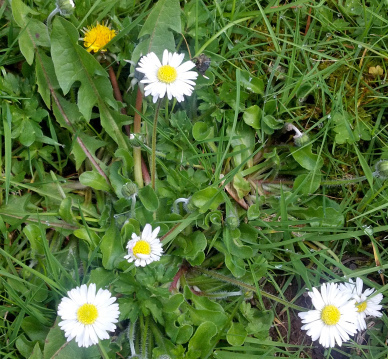 I can’t seem to find it listed in any of my 20 or so foraging or herb reference books, yet Lawn Daisy, Bella perennis, the little white and yellow flowers with fuzzy round leaves in the photo above, is secretly both edible and good-tasting! Somehow, this prolific “weed” found on lawns and roadsides has gone unnoticed by the foraging community. It is our secret, then, that the flowers are sweet and slightly astringent, and the leaves have a bright tangy tart flavor. They make a great spontaneous snack for kids and adults, and for those who like to cook, they make an interesting garnish or addition to a salad, too.
I can’t seem to find it listed in any of my 20 or so foraging or herb reference books, yet Lawn Daisy, Bella perennis, the little white and yellow flowers with fuzzy round leaves in the photo above, is secretly both edible and good-tasting! Somehow, this prolific “weed” found on lawns and roadsides has gone unnoticed by the foraging community. It is our secret, then, that the flowers are sweet and slightly astringent, and the leaves have a bright tangy tart flavor. They make a great spontaneous snack for kids and adults, and for those who like to cook, they make an interesting garnish or addition to a salad, too.
Lawn daisies, aka English daisies, are native to Europe. Medicinally, they are astringent and anti-catarrhal, and some sources attribute many other properties to them as well. Sixteenth century herbalist John Gerard reportedly recommended lawn daisy for inflammation of mucus membranes, heavy menstruation, migraine, and to promote healing of bruises and swellings. Other sources list it as useful for healing mouth ulcers, too.
Lawn daisies look similar to the taller, larger, longer-stemmed, not-as-tasty but also common Oxeye Daisy, Chrysanthemum vulgare. Herbs in the Chrysanthemum genus contain compounds known as pyrethins, which are effective at paralyzing fleas, making an infusion spray useful for pet owners who will follow up with a flea comb. This is safe for both cats and dogs, according to the excellent book “Herbs for Pets” by Gregory Tilford and Mary Wulff. (Another anti-flea herb is mullein top, which contains rotenone).
Browse more plants in the Plant Galley here.
***
Upcoming Classes:
Field Guide to Plant Spirits: A Metaphysical Materia Medica
2 pm to 4:30 pm on Saturday May. 10
New Renaissance Bookshop, 1338 NW 23rd Ave, Portland, OR
Invite your friends on Facebook here
Herbs have so much to offer us, not just food and medicine but also as powerful energy healers and wise teachers! Each species has a different area of expertise. Some plant spirits help us cultivate self-acceptance within, while others teach compassion and healthy boundaries, heal the heart, protect us, or ignite our psychic talents. In this engaging and enlightening class, we will cover the metaphysical properties of 12 plant spirits, including flowers, trees and weeds, and go on a powerful guided meditation to work with them together! $25 at the door
*
Herbal Medicine Making 101
2 pm to 5 pm on Saturday, May 17
The Herb Shoppe Pharmacy, 3912 N. Mississippi, Portland, OR
Invite your friends on Facebook here
In this fun, informative, and hands-on class, you’ll learn the basics of home medicine making so you can feel confident and comfortable making your own highly effective herbal infusions, decoctions, tinctures with various solvents, infused oils and salves. Everyone who attends gets to *take home* the medicine that we make in class to get your personal apothecary started, as well as a very thorough instructional handout. Includes all materials.
Space is limited and this class tends to sell out fast. $45. Advance registration required here.
*
Private Hikes, Yard Assessments, & Urban Plant Walks
Available by appointment for individuals and groups at the location of your choosing. More info here. E-mail me at RebeccaELerner(at)gmail.com to inquire.
March 14, 2014
Classes & Hikes this Spring in Portland

Photo by Brent Wojahn/ The Oregonian
Plant ID Hikes, Urban Walks, and Yard Assessments
I love taking people out into the wilderness — urban or traditional — one-on-one or in small groups to teach plant identification. I am 100% dog friendly and happy to come to you or customize the class to your needs, whether you want to make a field tincture, learn about plants for survival purposes, or want to explore herbal smoking blends and plant spirit meditation. Rates vary depending on group size and other factors, and transportation is available in some cases also for an additional fee. Inquire at RebeccaELerner@gmail.com
Private talks and presentations for indoor events and educational clients are also available.
PUBLIC CLASSES
Reiki 1: Activating Your Lightworker Self
1 pm to 9 pm on Saturday, April 5, in Portland, OR
Reiki 1 is very useful for deepening meditation and relaxation. Reiki 1 is both an educational opportunity and a ceremonial initiation that gives you the ability to channel Reiki healing energy at will through your hands and in doing so, heal yourself and others, including pets, land, water, food, life situations, and more. $150 in advance. Check out the full event description on Facebook. Read about Reiki and plants at PlantSpiritReiki.com
***
Herbal Medicine Making 101
2 pm to 5 pm on Saturday, May 17
The Herb Shoppe Pharmacy, 3912 N. Mississippi, Portland, OR
In this fun, informative, and hands-on class, you’ll learn the basics of home medicine making so you can feel confident and comfortable making your own highly effective herbal infusions, decoctions, tinctures with various solvents, infused oils and salves. Everyone who attends gets to *take home* the medicine that we make in class to get your personal apothecary started, as well as a very thorough instructional handout. Includes all materials.
Space is limited and this class tends to sell out fast. $45 in advance. Register online here.
**
Field Guide to Plant Spirits: A Metaphysical Materia Medica
2 pm to 4:30 pm on Saturday May. 10
New Renaissance Bookshop, 1338 NW 23rd Ave, Portland, OR
This event is on Facebook here
Herbs have so much to offer us, not just food and medicine but also as powerful energy healers and wise teachers! Each species has a different area of expertise. Some plant spirits help us cultivate self-acceptance within, while others teach compassion and healthy boundaries, heal the heart, protect us, or ignite our psychic talents. In this engaging and enlightening class, we will cover the metaphysical properties of 12 plant spirits, including flowers, trees and weeds, and go on a powerful guided meditation to work with them together! $25 at the door
**
Igniting Your Psychic Connection with Elderberry & Passionflower
2 pm to 4:30 pm on Saturday June 21 *SUMMER SOLSTICE*
New Renaissance Bookshop, 1338 NW 23rd Ave, Portland, OR
This event is on Facebook here
Elder and Passionflower are two powerful plant spirit allies who love to deepen and ignite your psychic abilities. Together, they can center us in the heart space, heighten our receptivity to spirit, and activate the pineal gland and third eye to help us move between worlds. If you’d like to deepen your connection with plant spirits, this class is for you. We will get to know these two plants intimately and go on a powerful guided meditation to receive their incredible activations. $25 at the door
**





